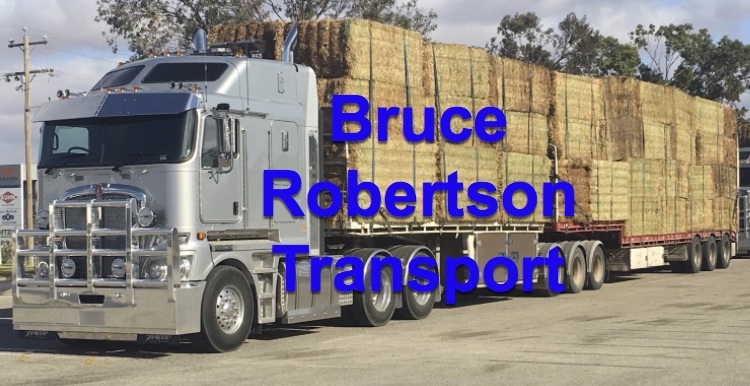How does the Grain market react after this rain?
- By: "Farm Tender" News
- Cattle News
- Nov 06, 2019
- 546 views
- Share

This article is bought to you by Bruce Robertson Transport and Macarthur Stockfeed and Rural Supplies.
By Angus Groves - AWB
Much needed rain fell over most of NSW at the end of last week, and then continued right through the weekend as the system moved slowly through inland areas. This has brought some small reprieve to many farmers struggling in the face of the drought. And if nothing else, some of the best videos I have seen are those with precious water flooding into house dams. Providing a much needed buffer coming into the warmer period, and for those that have been carting water for many months it will come as a huge relief.
The question now is, how does the market react after this rain? There are a couple of trains of thought here. The first, is that this rain (100mm+ in some areas) could create quality problems, which will see a lack of adequate milling grades once downgrades start to flow through. However, the second train of thought, and possibly the most likely given the rainfall pattern over the weekend, is that we see the market move lower.
There are a few main reasons market participants see the grain and oilseed markets moving lower over the coming weeks, which includes selling pressure as harvest resumes after the rainfall. Many farmers around the country continue to struggle for cashflow after successive years of poor crops, so their need for cash will outweigh the cost of storing and hoping for higher values. This increased harvest supply for sale allows the traders and consumers to reduce prices paid, as they buy the grains they need to see them through.
Ad - For all you Hay and Grain Cartage call Bruce Robertson Transport - Australia wide - Ad
Ad - Macarthur Stockfeed and Rural Supplies covering all the Southern Sydney area - Ad
Another reason for the market receding will be the increased grain-fill with crops that are still green. Much of Victoria and lower SA still have a large percentage of green crops, and although this rain won't add yield in terms of additional grains, it will allow grains that are already in the heads to fill sufficiently. This means less chance of quality issues through the most-part of Victoria and South Australia, and more chance we see the flow of grain into New South Wales or possibly via the export channels.
The final reason many commentators see the wheat market falling post the rain, is the reduced feed pressure and stock numbers present across much of drought-ravaged NSW. As we have heard consistently through New South Wales and into Queensland, stock numbers are being reduced ahead of a potentially dry summer. Last year the scenario was drastically different with many mixed farms happy to carry stock through the summer and continue to feed. With many people offloading their stock (completely in some cases) we should see a reduced demand from the grower side this summer, which will affect the demand equation.
Without China in the market for Australian barley, there will be a significant surplus of barley across the country. And unless we see international export demand from Victoria and South Australia, we will have to see this feed grain push into areas of northern markets at a discount. The barley market could get very interesting if farmers dig their heels in and hold barley short term.
Ad - For all you Hay and Grain Cartage call Bruce Robertson Transport - Australia wide - Ad
Ad - Macarthur Stockfeed and Rural Supplies covering all the Southern Sydney area - Ad  .
. 











Share Ag News Via